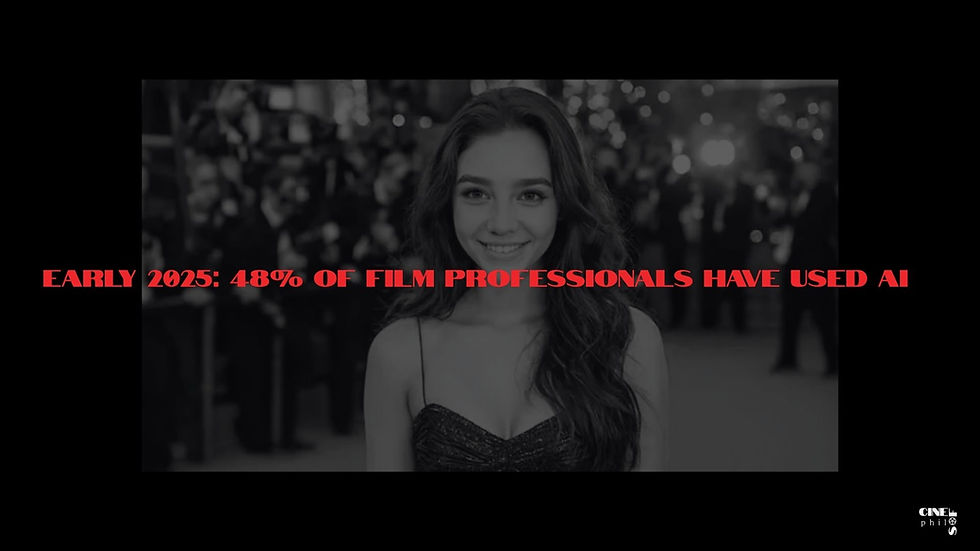Brazil's Gingado and the Gringo Gaze: Nick Storring's Mirante Through a Brazilian
- Sofia R. Willcox

- Mar 28
- 3 min read
Mirante is the ninth album from North American musician Nick Storring, released on March 21, 2025. While Storring has stated that he didn’t aim to replicate any specific Brazilian music, but rather to capture his experience in the country, he integrates Brazilian instruments throughout the album—including cavaquinho, cuíca, reco-reco, pandeiro, triangle, bamboo flute, and a set of 24 wooden bird calls. Their influence is subtle yet unmistakable, gradually surfacing throughout the music. These organic sounds, combined with minimal electronic processing, create a raw, immersive soundscape that reflects both his outsider perspective and Brazil’s eclectic musical diversity.
The album cover further emphasizes Storring’s outsider perspective, with his back to the camera, mirroring the title’s meaning. This visual, paired with the album’s intricate techniques, highlights the contrast between the landscape’s beauty and the individual’s exploration of it. In turning his back to the scenery, he evokes the Romantic notion of the sublime—not just admiration, but a sense of awe, distance, and the impossibility of fully grasping the vastness before him. Storring’s connection to Brazil is also personal—his in-laws and his partner’s Brazilian friends live there. His track “Falta de Ar” (“breathlessness”) subtly reflects this affection.
Storring’s choice of the title Mirante (which means "lookout" or "overlook" in Portuguese) speaks directly to his position as an outsider—a tourist looking in. The panoramic qualities of the music reflect this perspective, sweeping through different sonic landscapes, much like gazing out over a vast vista. The album cover, with Storring’s back to the camera, further reinforces this outsider’s viewpoint, mirroring the sense of discovery and exploration at the heart of Mirante.
Mirante’s soundscape captures both the Brazil seen by a foreigner and the country’s distinct gingado. Once again, Storring’s position as an outsider is reinforced, offering a nuanced understanding of Brazil's complexities and the intimacy of its everyday life. Gingado originates from Kimbundu (a Bantu language), where "junga" means "to stir" or "to sway." This rhythm blends batuques, samba, indigenous heritage, and jungle frame drums, layered with everyday sounds—from birds chirping to ambient foley noises. It reflects both the urban and natural environments, with their contrasting beauty. The jungle concretee coexist, shadows swaying beneath the sun's rays. Two of the album’s tracks are direct tributes to Curitiba and São Paulo, cities that encapsulate the contrasts Storring seeks to convey.
Storring subtly captures Brazil’s eclectic rhythm, reflecting the country’s rich diversity—from its indigenous peoples to descendants of Europeans and Africans, as well as immigrants from Asia, the Middle East, and beyond. Not to mention its natural biodiversity and the sounds that come with it. This melting pot of cultures and nature is echoed in Brazil’s vibrant musical landscape, encompassing a wide array of genres, instruments, and dance styles. It is, indeed, an integral part of its identity.
However, it goes beyond that. Rhythm is deeply embedded in the subconscious of Brazilians. It manifests in their melodic intonation—in clear, open vowels, strong stressed syllables, vowels at the ends of words, and expressive inflections. There is a clear influence of Indigenous and African cultures too. Additionally, dynamic physical expression accompanies conversation, with broad gestures, expressive facial movements, and a natural sway in their bodies—all contributing to a rhythmic back-and-forth dynamic in everyday interaction. Regionalism and sociolects also play a significant role in shaping Brazilian rhythm.
Storring’s three-part track “Roxa” once again reflects his perspective. Purple is often associated with the mystical, symbolizing spirituality, magic, and mystery. As a foreigner, Roxa encapsulates Storring's journey of discovery. Linked to both spirituality and royalty, purple also represents the sense of awe and admiration that comes with love at first sight, reflecting his initial, almost reverential connection to Brazil. Despite being an outsider, Roxa symbolizes his bond with the country and the deeper layers of culture he has yet to fully uncover. In this way, Brazil remains an overlooked gem, full of stories waiting to be (re)told.
This text is also available on Outside Left: https://outsideleft.com/main.php?updateID=3480





Comments